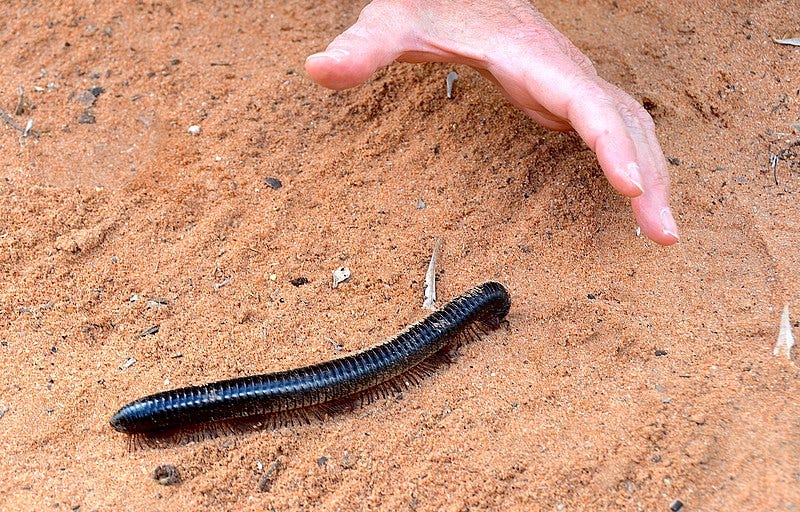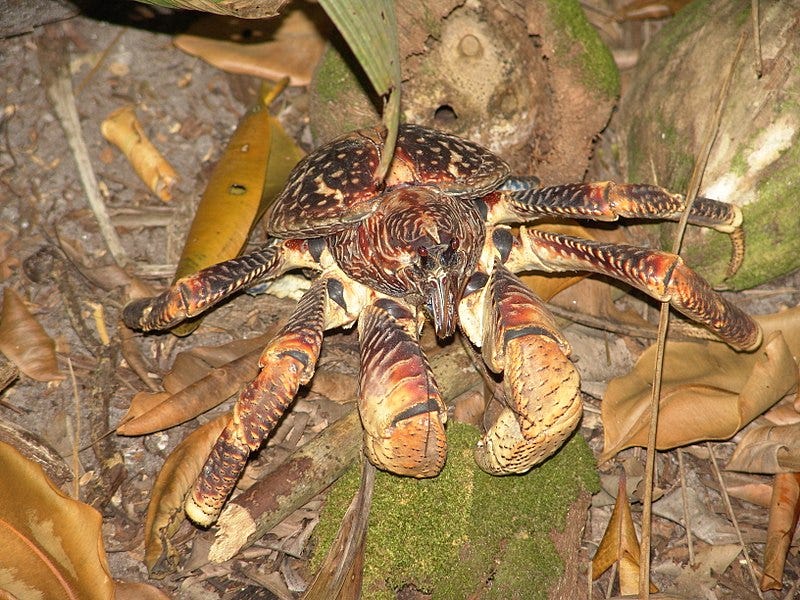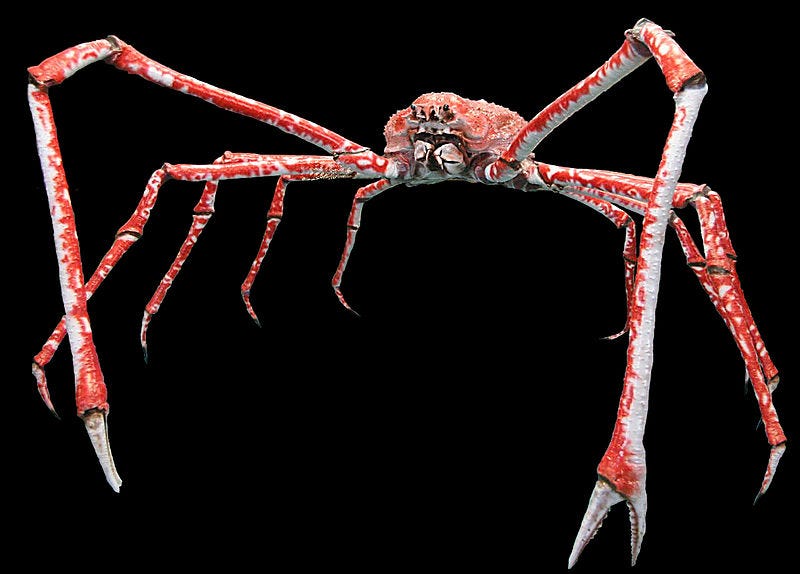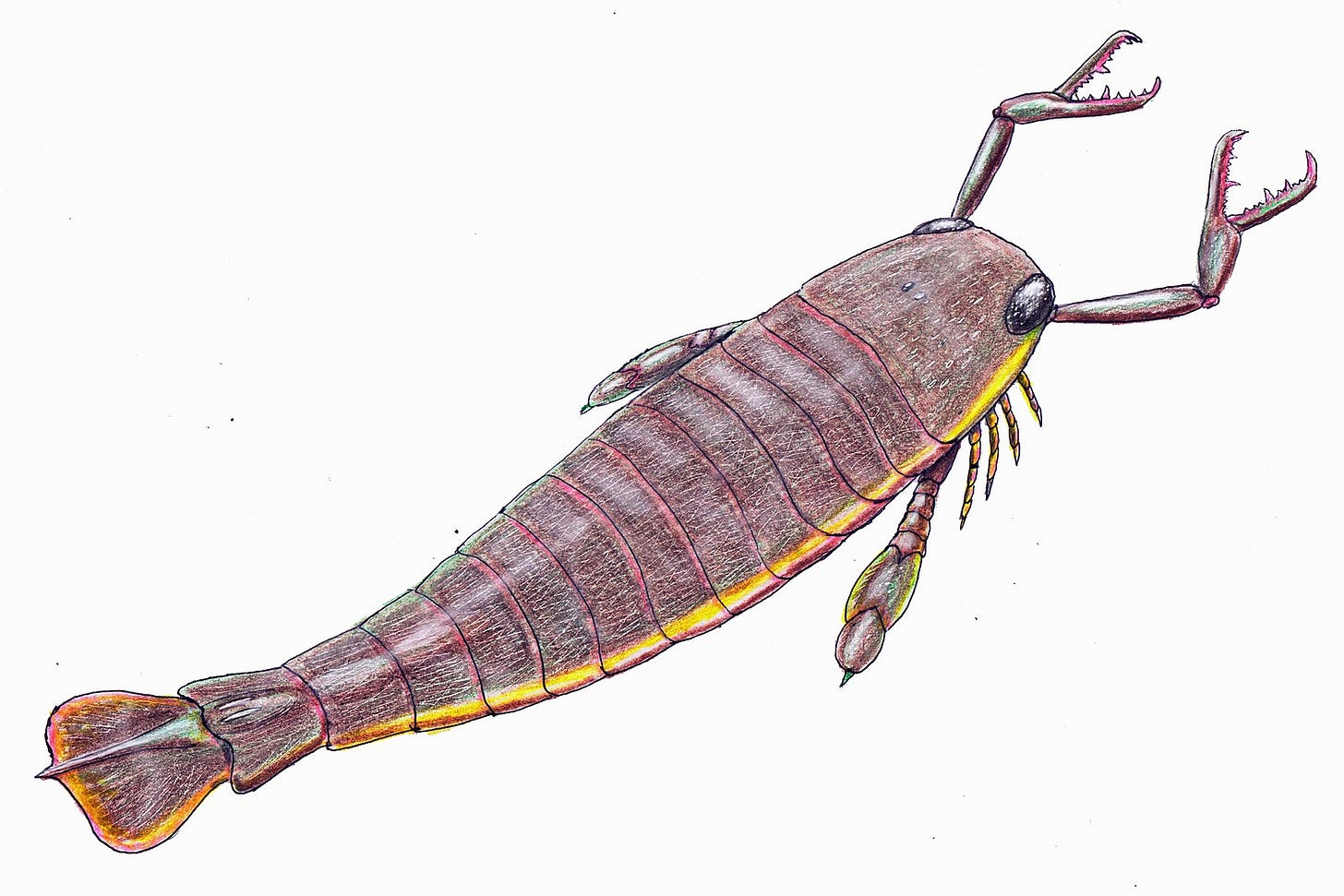Bugs, How Big Can They Get?
Movies/books like Them!, Eight Legged Freaks, Starship Troopers (book and movie), Harry Potter and Lord of the Rings series (giant spiders), James and the Giant Peach (book and movie), Empire of the Ants, Invasion of the Bee Girls, the Wasp Woman, The Fly (1958 & 1986), AntMan (not the man in the suit, but there was a giant ant playing the drums) and many others have giant terrifying arthropods. (How many of these have you seen? Let me know.)

I know what you are saying, Jotham, it’s the holiday season, where’s the holiday Rabbit Hole of Research. Bah humbug. LOL. Okay, don’t throw any snowballs at me. You want a holiday tie in to giant insects, never fear the internet rabbit hole always delivers: Edmund Gwenn, best known for his role as Santa Claus in the classic Christmas film: Miracle on 34th Street, plays Dr. Harold Medford in “Them!”—Now that we have that matter settled, how big can bugs get.
So, I like to think there are three categories of giant bugs in fiction:
1) Human to insect experiment gone wrong—i.e The Fly;
2) assisted evolution (chemical, nuclear fallout, etc accelerates growth): Them! (A-bomb testing in desert), Let The Ants Try, by Frederik Pohl (a great short story combining time travel and giant insects); and
3) giant insects from outer space—Starship Troopers (a great mix of military satire and giant insects, “The only good bug, is a dead bug...”
***
On a personal note, “Let the Ants Try,” originally published in the Winter 1949 issue of Planet Stories, was one of the first science fiction stories I ever read (and no, I’m not that old). It was in an anthology my dad was reading and he thought I’d like the story. I had forgotten about this until writing the newsletter. But, the internet never fails: the anthology was edited by Robert Silverberg “Mutants: Eleven stories of science fiction” and yes I ordered it); back to the giant bugs—
***
So, should we be investing in giant fly swatter technology or is giant insects just a fiction fantasy? Let’s keep going down the Rabbit Hole of Research and find out.
Before I get to far into this, lets take a step back and talk about definitions:
A giant ant by any other name is still a—shriek!
Like most things that freak us out we tend to lump them into one broad category, a bug is an insect, is a spider, is a creepy crawly. This is all kind of correct, all of these creepy crawlies are part of the Phylum Arthropoda.
Anthropods are often separated into four groups:
Arachnids (spiders, scorpions, ticks, etc)
Crustaceans (crabs, shrimps, lobsters, etc)
Hexapoda, the largest group which includes insects (beetles, cockroaches, ants)
Myriapoda (millipedes, centipedes)
As you can see this group includes insects, crustaceans, spiders, scorpions, and centipedes and share several characteristics, which will be important for this discussion:
Exoskeleton: which means they have no internal bones for support, and as they grow they must shed or molt their existing exoskeleton. Molting is a process where a new softer exoskeleton is formed under the existing one, and once they shed the existing covering they gain room to grow. Anthropods are very vulnerable during molting and generally hide during this process.
Segmented Bodies: Their bodies are internally and externally segmented. The number depends on the species.
Jointed Appendages: the name Anthropod comes from the Greek “anthro” meaning joint and “pod” meaning foot. All Anthropods have jointed limbs, the generally bend in only on direction, attached to their hard exoskeletons that allow for movement and flexibility.
Bilateral Symmetry: An anthropod’s body can be divided vertically into two mirror images. They have a similar symmetry as fish, mice and humans.
Open Circulatory System: An open circulatory system means blood is pumped by their heart, into the hemocoel cavity where the organs are attached, and through open spaces called sinuses in order to reach tissues. In contrast, humans and other large animals (elephants and whales) have a closed circulatory system of interconnected arteries, veins and capillaries to move blood around to various organs and tissues.
How Big Did You Say That Arthropod Was?
Here are 10 of the largest Anthropods roaming the Earth today according to the internet (I have a longer list on my website, here)
Giant stick bugs can reach 2 feet long.
Titan beetles are one of the largest beetles in the world reaching lengths of 6.6 inches long. Known for their short, curved and sharp mandibles that can snap pencils in half and cut into human flesh.
Giant water bugs, also know as toe-biters and alligator ticks can reach lengths of 4.5 inches. They get their name because they are known for their powerful bite. In Thailand they are considered good eating, and black lights, which draws in the insects, are used to harvest them.
Queen Alexandra's Birdwing is the largest butterfly in the world. It has a wingspan of over 1 foot. It was discovered in 1906 and the first specimens were collected using shotguns.
Brazilian salmon pink bird eating tarantula have a leg span of 11 inches, and the largest spider in terms of leg span.
Heterometrus swammerdami and the African Imperial Scorpion (both scorpions) have a length up to 11.5 and 9 inches respectively.
Archispirostreptus gigas and Scaphistostreptus seychellarum (Millipedes) can reach sizes exceeding 11 inches.
Horseshoe crabs can grow to 24 inches.
Coconut crabs are the biggest Anthropod living on land. They can grow up to 3 feet and 9 pounds.
Japanese spider crabs are the biggest Anthropod. It has the advantage of living underwater where it’s weight is supported (more on that later). They have a leg span of 12.1 feet from claw to claw, a body size up to 16 inches and can weigh 42 pounds.
Wow, these are some impressively large Arthropods, but not human size like in fiction, so have larger insects ever existed?
Meganeuopsis Permiana would have been buzzing around 360-260 million years ago was a giant distant relative of the dragonfly. It would buzz around at an impressive size of 17 inches long and a wingspan of 28 inches.
Arthropluera was a massive millipede (an arthropod), crawling around 345 to 295 million years ago but they have legs for days and could range in length from 1 foot to 9 feet. This is the largest known land invertebrate that ever roamed the planet Earth.
If you happen to park your DeLorean close to a prehistoric swamp, be careful not to cross paths with the Jaekelopterus, another anthropod that lived about 390 millions years ago . The Jaekelopterus was an eight foot long sea scorpion (even though the word sea in it’s name suggests it lived in the oceans, scientist actually believe it lived in swamps or river estuaries).
Okay, so we are getting some big creepy crawlies, but still nothing house size. What’s limiting the size of Anthropods?
So, no one really knows. The leading hypothesis is that the oxygen content in the atmosphere is the major limiting factor, but there are a few others, let’s go through them.
Oxygen content in the atmosphere: So, earlier I mentioned many arthropods have an open circulatory system (roaches, spiders, bees, etc) where the blood and bodily fluids are not bound up in vessels this makes it difficult to move blood through a large body as circulation is hindered by gravity pulling the blood downwards. Yet, if you had more oxygen in the atmosphere you could overcome this limitation. And some evidence is looking at arthropods from 300 million years ago which were very large (I mentioned dragonflies the size of hawks and ants the size of hummingbirds), and at that time the oxygen content in the atmosphere was about 35 percent versus 21 percent today. Work done by Jon Harrison at Arizona State University has shown that if you grow insects in less oxygen they get smaller and if you increase the oxygen content certain species can get up to 20 percent larger in a single generation.
***note: crustaceans are a bit more complicated as they have gills, and current research is finding they have something in between a open and closed circulatory system, this is probably why crab are the largest land and aquatic arthropods***
Exoskeleton: Remember that the exoskeleton is the support structure of the arthropod, they have no internal bones. the first issue is molting, remember for an arthropod to grow bigger it has to shed it’s existing exoskeleton and grow another. This is a very energy intensive process as, the exoskeleton is anchored to the musculature system and has to be reconnected during molting. Molting for a large creature would make a large arthropod very vulnerable because it would be difficult to hide during the process. There is evidence that ancient flies decreased in size to avoid hungry evolving birds.
Weight limit: Speaking of exoskeletons. If arthropods got a lot bigger their exoskeleton would have to grow also and could be impossibly thick (there is no direct evidence of this as larger arthropod exist without a thicker exoskeleton). But a greater than human sized exoskeleton would still be heavy, and this larger supporting exoskeleton could hinder the movement of the segmented joints, muscles would have to grow bigger and proportionately stronger. The larger exoskeleton would cause the arthropod to be slow and less agile.
So, Giant Arthropods, Just Fiction or Maybe Fact?

Well thankfully there are biological limits to the size of insects—we can exhale now— and it’s probably not likely that an ant or bee crawling or flying through a pile of nuclear waste, or a mad scientist’s accidental genetic mutations will be enough to overcome the many arthropod’s size limitations (speaking of psycho scientists please let’s not talk about The Human Centipede). Sorry, MCU fans, but Ant-thony probably would have some trouble breathing, forget playing the drums.
What about human insect hybrids like The Fly or a radioactive arachnid bite (Spider man, spider man, he can do what a...you know the rest). If you take the closed respiratory and circulatory system of a human, lose the exoskeleton, but keep the super strength, head, and wings—I can still hear that high pitched voice yelling, “Help me!”—Maybe it could work! And let’s not get started on Arthropods on other exoplanets, but that could work: one with lower gravity, higher oxygen content, and a terraforming mission using viruses gone wrong—but if you want to see it done well, check out Adrian Tchaikovsky, “The Children of Time”
Hope you enjoyed this little trip down my Rabbit Hole of Research, and will join me next time as I reveal the actual factual science in fiction and fantasy. Have a wonderful and healthy holiday and Happy New Year! See you in 2021!
Did I get something wrong ... right? Let me know, please Email
Oh yeah, I’m sure you thought I forgot about the cookies. Well, I love cookies, eating them and making them (I always make too many during the holiday season—can there be too many?) Also, If you leave the crumbs, you’ll have insects come visit you!
My favorite cookie is the snickerdoodle, but I like a lot of different cookies, as you can see in the picture (snickerdoodles, Sante’s Hermit Cookies, and Cocoa-Oatmeal Jumbos).
Here is a picture of my recipes (cannot read them just shoot me an email and I’ll send you the recipe!), but one of my favorite cooking books that demystifies the art of baking: Ratio: The Simple Codes Behind the Craft of Everyday Cooking by Michael Ruhlman
Question for you: What’s your favorite cookie? Let me know Email.
If you want to keep up with me on the interwebs, find me at your favorite digital hangout!
Check Out Enchanted Kingdoms:
Published February 23 2021
Description
Old tales: New twist
The stories you loved as a child have been twisted into wildly addictive tales that will bewitch you as an adult: enchanted castles, spellbinding magic, handsome princes, beautiful princesses, and as many happily-ever-afters as your heart desires.
Cherish this mesmerizing set of 22 classic tales retold by a collection of best-selling and award-winning authors. Each novel-length story features a different take on your favorite fairytale.
Your every fantasy will come to life in ways you could never have imagined, packed full of heart-wrenching romance, gripping adventure, and magic that will weave you in its spell.
One-click now to grab this limited edition set before the clock strikes midnight! Pre Order Now
All proceeds benefit Puzzle Peace United, a children's autism charity
And Don’t Forget On You Way Out:
My Rom-Com novella will be released in a Box-Set January 19, 2021.
You can pre-order at your favorite e-book store:
I’m getting excited. I cannot wait to share this story with you all!
My Rom-Com novella, ‘Tomorrow May Be Too Late,” will be released in the Askew Ever After Box-Set, January 21st 2021. The very sexy cover was revealed.
You can pre-order at your favorite e-book store here! If you already placed an order, thank-you.
Enjoy the rest of the Holiday Season, and see you in 2021. Stay Safe and Healthy!












